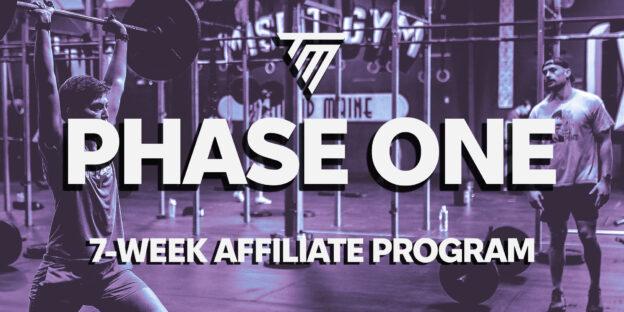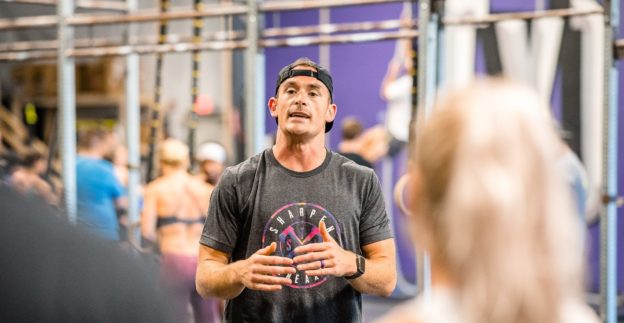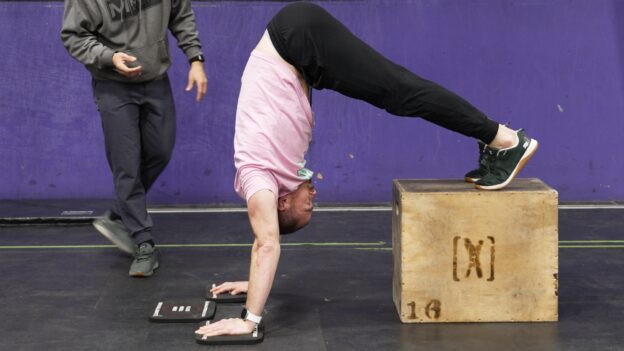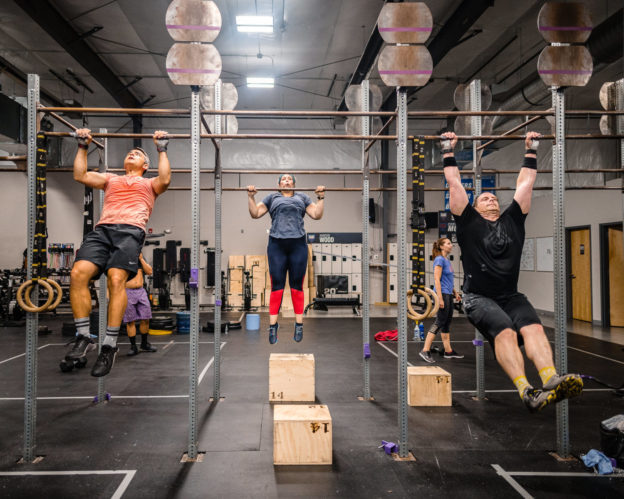
Programming Terms and Descriptions

Our mission at Team Misfit has always been to be the number one resource for affiliate coaches to improve their craft. We try to accomplish this mission by providing tools and content that coaches can use to better their class experience, and also through our affiliate programming, which is why we’ve decided to do away with the long form workout descriptions and instead opt for a more concise communication style. Instead of seeing written descriptions, you will now see a few key categories that we think more clearly define the expectation of the workout while allowing coaches the flexibility to program their own skills and drills. Below is everything you need to know about these new descriptions, which will vary slightly depending on the style of training piece the description is associated with (strength, conditioning, extras, skill, etc). Our hope is that a clearer, more concise description format will communicate our goal better while also allowing coaches more freedom to adapt the program to the needs of their gym.
Strength Work
Stimulus
- Technique: athletes should be using sub-maximal loading with an emphasis on mechanics and technique to achieve neurological adaptation. Coaches can implement pauses, tempo, or other methods that force athletes to use lighter loading and really focus on how they’re moving.
- Speed: athletes should be using sub-maximal loading with emphasis on moving fast. Force = mass x acceleration, so we can achieve a strength stimulus with loading as light as 30% if moved with serious speed. These days can typically have shorter rest periods – anywhere from :45 on the short end to 2:00 on the upper end. Not convinced? Check out how Louie Simmons from Westside Barbell trains his powerlifters.
- Heavy: athletes should be pushing the loading to achieve a more profound strength stimulus. These days require a thorough warm up and significant rest between sets – in the neighborhood of 3+ minutes depending on the loading. We’re looking for every set to be “heavy”, and if a percentage is not specified the coach can choose whether to have athletes build in weight or remain at one weight for each set, depending on what the coach believes her/his athletes need. Also note that coaches should allow athletes to go heavy relative to both their own capabilities and how they’re feeling on that day.
- Stamina: these are training pieces that typically center around accumulating volume or reps at moderate intensities. The loading will usually be slightly heavier than would be found in a conditioning piece, and is where we blur the lines between strength and conditioning. Examples include 5 rounds of 1:00 Max Power Cleans @ 60% with 1:00 of rest, or something like a 3×12 Back Squat.
- For Quality/Accessory: these pieces are meant to be done with light loading with an exclusive emphasis on quality. Loading should always be submaximal and movements should be performed under control with perfect technique, not for time or max reps.
Rest period: Approximately how long athletes should rest between sets to achieve the stimulus. Consider the overall flow of class and adjust this prescription accordingly.
Suggested Coaching Focus: the recommended area of the lift/training piece we recommend paying particular attention to.
Additional Notes/Resources: Anything else we believe would be helpful to the coach running class including ideas for drills, class setup, logistics, etc..
Conditioning and Extra Work
Feel: the intended stimulus, or how athletes should during and after the workout. Stimuli include Conditioning, Gas, and Muscular Overload.
- Conditioning: workout is written to allow for smooth unbroken movements and fast transitions. Weights and rep schemes should allow for continuous movement with the limiting factor being how the athlete chooses to push transitions without having to stop. When scaling, coaches should err on the side of lighter and/or smaller rep schemes to ensure athletes stay moving.
- Gas: workout written intentionally to push the athlete’s heart rate out of a comfortable range, forcing them to stop at some point due to cardiovascular overload. This is akin to the feeling of getting the wind knocked out of you and having to regain your breath. When scaling, coaches should scale athletes individually and ensure that there’s at least one place in the athlete’s workout that will push an athlete outside their comfort zone without stopping them completely.
- Muscular Overload: workout is intentionally written to create overloaded areas of musculature with specific sets of movements and is aimed at trying to stop athletes with extreme muscular fatigue. When scaling, coaches should recognize that these workouts will already be written to create the stimulus and should still modify movements for athletes as needed (e.g. changing regular push ups to elevated or band assisted push ups). Gymnastics movements, particularly upper body ones will create this stimulus rather quickly.
Pacing: the intended overall pace at which the athletes should attempt to move through the workout. Paces include Forever, Sustain, Reach, and Send and are defined below.
- Forever: The pace at which the athlete could hold throughout the workout if it were an hour long AMRAP, long endurance event, or recovery piece. This pace is typically reserved for movements like running, rowing, biking, etc. where athletes switch from one pace to another, with “forever” being the place where athletes can recover the most.
- Sustain: Considering the total volume of the workout, the pace that an athlete could stay at for the entire duration of the workout whether it is a continuous effort (metcon) or not -(interval). This pace is what we would expect in a medium-to-long workout where it doesn’t make sense to go faster than is sustainable, and a consistent pace should be held with no serious drop offs. Athletes should still push hard at the end to finish strong.
- Reach: Considering the total volume of the workout, this pace is faster than the athlete would normally hold if the workout straight through. This pace will also usually apply to an interval style workout. For example, if the workout was: 3 rounds of 10 Clean and Jerks at 165/115lbs with a 1:00 rest after each set, a “Reach” pace indicates we want the athlete to perform those sets of 10 at a faster pace and/or with a different strategy (touch and go vs. singles) than if the workout were simply 30 Clean and Jerks For Time. Most of the time these workouts are shorter metcons or intervals.
- Send: this is a reckless pace aimed at improving an athletes highest output. Athletes should not consider the total volume of the workout, only the volume of the immediate task about to be performed. These workouts are typically very short, or repeated bouts of extremely high outputs like Assault Bike or row sprints. Send it.
Target Score
Using the information provided with the Feel and Pacing for the workout, the target score is the time or rounds/reps we hope that roughly 90% of your athletes finish within. For example, a workout with a target score of 6-10 minutes means we want the vast majority of athletes to finish within that range. Note that the target score doesn’t necessarily represent the fastest/best score, nor the lowest score or time cap, but is meant to provide additional information as to how the workout should be presented, scaled, and approached.
Firebreather Score
This score is for the cyborgs in your gym, and is the score we think is attainable but extremely difficult to achieve by an athlete performing the workout as prescribed.
Suggested Coaching Focus
An element of the workout we think could be focused on from a coach’s perspective. This focus is a great starting point for new or less experienced coaches to use, but should not be the only thing coaches are paying attention to.
Scaling/Modification
Suggested scaling or modification options we recommend to retain the desired stimulus of the workout, including movement substitutions when there is the potential for equipment limitations. When scaling, coaches can keep these options in mind but should defer to their knowledge of the athlete first. We almost always recommend scaling the loading before scaling the reps of a movement, with gymnastics being the most common exception. It also goes without saying that reducing the loading of any weighted movement is a scaling option that should be used regularly based on the Feel and Target Score of the workout.
Additional Notes/Resources
Anything else we believe would be helpful to the coach running class including links to coaching/efficiency tip videos, ideas for skill work, class setup, logistics, etc..


Responses